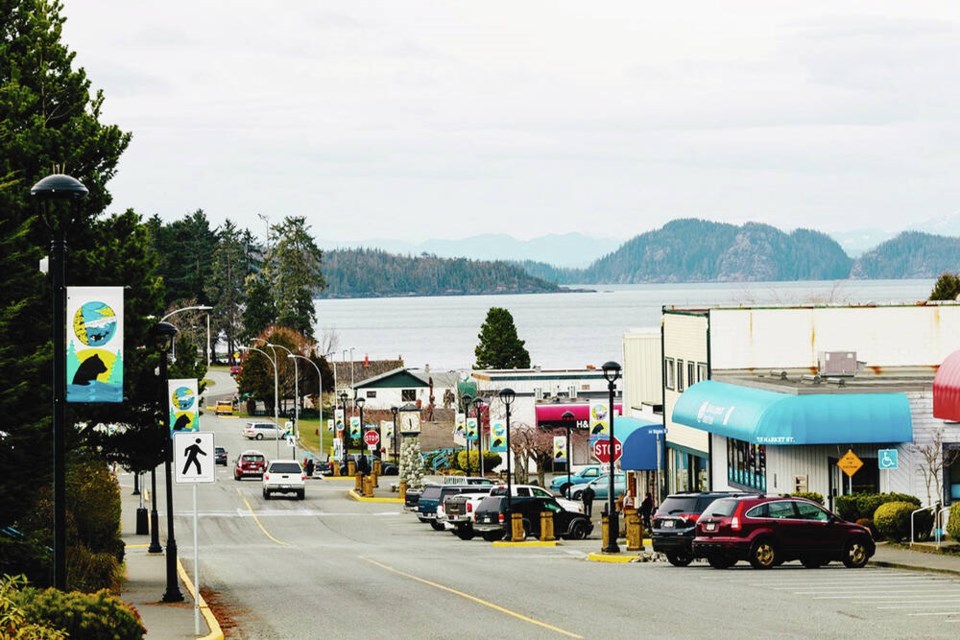When the latest census population numbers were released last week, Port Hardy stood out as one of the rare Vancouver Island municipalities with a population drop.
The District of Port Hardy, located near the top of the Island, saw its numbers slide by 5.6 per cent, to 3,902 in 2021 from 4,132 in 2016.
In the nearby town of Port McNeill, the population didn’t decline, but it barely budged, showing a 0.8 per cent increase. In 2021, Port McNeill had 2,356 residents, up from 2,337 in 2016.
The two communities are the largest on the north Island, and despite little population growth, both are facing housing shortages.
When it comes to single-family homes in Port Hardy, “As fast as they go on the market, they get sold,” said Coun. John Tidbury, who was surprised to see the population decrease.
Housing prices are also increasing on the north Island, although the area has the lowest benchmark price — $434,000 in January — for a single family home among the seven regions within the Vancouver Island Real Estate Board. The overall benchmark for the board’s area, which covers the Island north of the Malahat, is $804,500.
Elizabeth Aman-Hume, executive director of the Port Hardy Chamber of Commerce and Visitor Centre, said the lack of rental inventory is a challenge.
“Rental housing is important to a lot of people. … Let’s say you get offered a great job up here, and you want to come up here and then there’s nowhere to live.”
All levels of government are working on the housing shortage, but it’s not an easy fix, she said.
Port McNeill Mayor Gaby Wickstrom is hoping that once the town updates its official community plan and its old zoning bylaw, it will attract developers and new businesses, which also require housing.
The town is considering ways to increase its housing stock, including measures such as carriage homes and permitting houses on smaller lots, she said.
Marilyn MacArthur, Port McNeill’s economic development manager, said some seniors with large homes would like to downsize into, for example, a unit in a four-plex or six-plex.
Port McNeill is suited to those who enjoy outdoor activities and who like the welcoming nature of a relaxed, small community. Streets are quieter and it’s a great place to raise a family, Wickstrom said. “Almost every single home has a view to die for.”
Many are wondering, however, what the future holds for two major employment sectors on the north Island: fish farming and forestry.
The federal government has ordered fish farms in the Discovery Islands to be free of fish by June this year. Mowi Canada recently announced it is closing its Surrey processing plant, although it’s retaining its Port Hardy processing plant, a major employer in the community.
Prime Minister Justin Trudeau has directed Canada’s fisheries minister to come up with a transition plan away from open net-pens in B.C. waters by 2025.
Meanwhile, the province has said it intends to reallocate forestry tenures to include more small businesses, First Nations and local communities. Last year, an old-growth logging deferral program was announced.
“These are tenuous times,” Wickstrom said.
Economic-development officials in Port McNeill and Port Hardy have their minds fixed on the future and are talking about ways to collaborate.
Each has high-speed Internet, which brings in new residents prepared to work remotely — something both communities are seeing.
A couple from Langley told Wickstrom they had enjoyed their part-time cottage in Port McNeill so much that they decided to relocate to the Island, where one of them is now working remotely.
“I’ve chatted with a few people who said: ‘I can work pretty much anywhere,’ ” she said.
Economic-development plans for Port McNeill and Port Hardy include promoting tourism and outdoor activities. Each features waterfront infrastructure. Both communities can boast of spectacular scenery.
A new project has been announced to beautify Port Hardy’s waterfront with an Indigenous welcome figure that will showcase the history of the Kwakiutl/Kwakwa̱ka̱ʼwakw peoples and will have seating and an interactive digital visitor information kiosk.
The project comes out of a funding arrangement between the Island Coastal Economic Trust and the Targeted Regional Tourism Development Initiative through Tourism Vancouver Island.
As Port McNeill aims for a more diverse economic base, Wickstrom said she would like to see the town’s population more than double to up to 5,000 people.
She would like to see businesses with 10 to 20 workers establish themselves in Port McNeill. She is not looking for a specific type of business, but a variety, she said — “Instead of always looking for that one big industry that comes in that we all rely on.”



